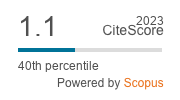Malaysian Journal of Mathematical Sciences, December 2024, Vol. 18, No. 4
Mathematical Fractional Analysis on Blood Casson Fluid in Slip and Small Arteries with the Cholesterol Porosity Effect
Azmi, W. F. W., Mohamad, A. Q., Jiann, L. Y., and Shafie, S.
Corresponding Email: [email protected]
Received date: 25 November 2023
Accepted date: 18 July 2024
Abstract:
Studying human blood flow is crucial in biomedical research to address blood-related disorders. However, experimental studies are costly and time-consuming. Hence, mathematical models have been developed to represent these physical phenomena. Yet, existing models often overlook the slip boundary effect. This study explores an analytical solution for the pulsatile flow of a fractional Casson fluid in a slip cylinder, considering free convection, magnetic fields, and porosity. Employing the Caputo--Fabrizio fractional derivative method, the problem is modelled. Analytical solutions are obtained using Laplace and finite Hankel transforms. Graphical representations illustrate velocity and temperature profiles, emphasizing parameters such as magnetic, Casson, Darcy, fractional, slip, Grashof, and Prandtl numbers. Numerical results for skin friction and Nusselt number are tabulated. The results suggest that enhanced slip velocity amplifies fluid flow, particularly near the cylinder's surface, generating lubrication to alleviate blood-vessel friction and improve blood flow by enabling smoother movement along vessel walls. The fractional-order derivative fluid model is more practical and realistic compared to the classical fluid model due to its memory effect which sudden rise in blood velocity can potentially damage the blood vessel and lead to atherosclerosis. The obtained analytical result can be used to validate the accuracy of the mathematical model obtained by numerical methods.
Keywords: blood Casson fluid; Caputo-Fabrizio fractional derivative; heat transfer; Hankel transform; slip velocity









